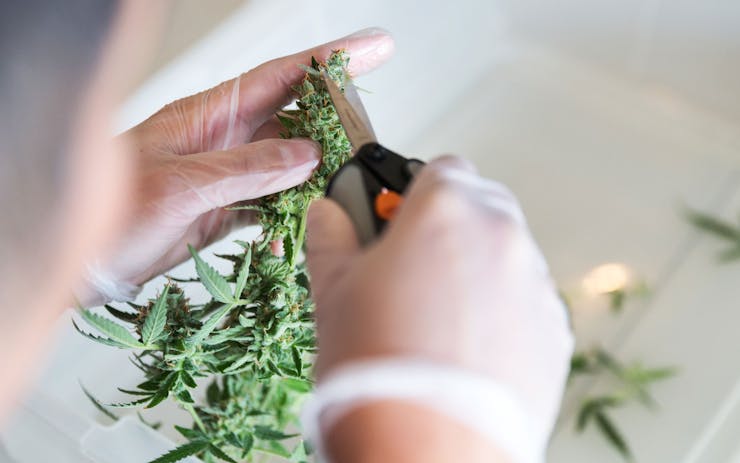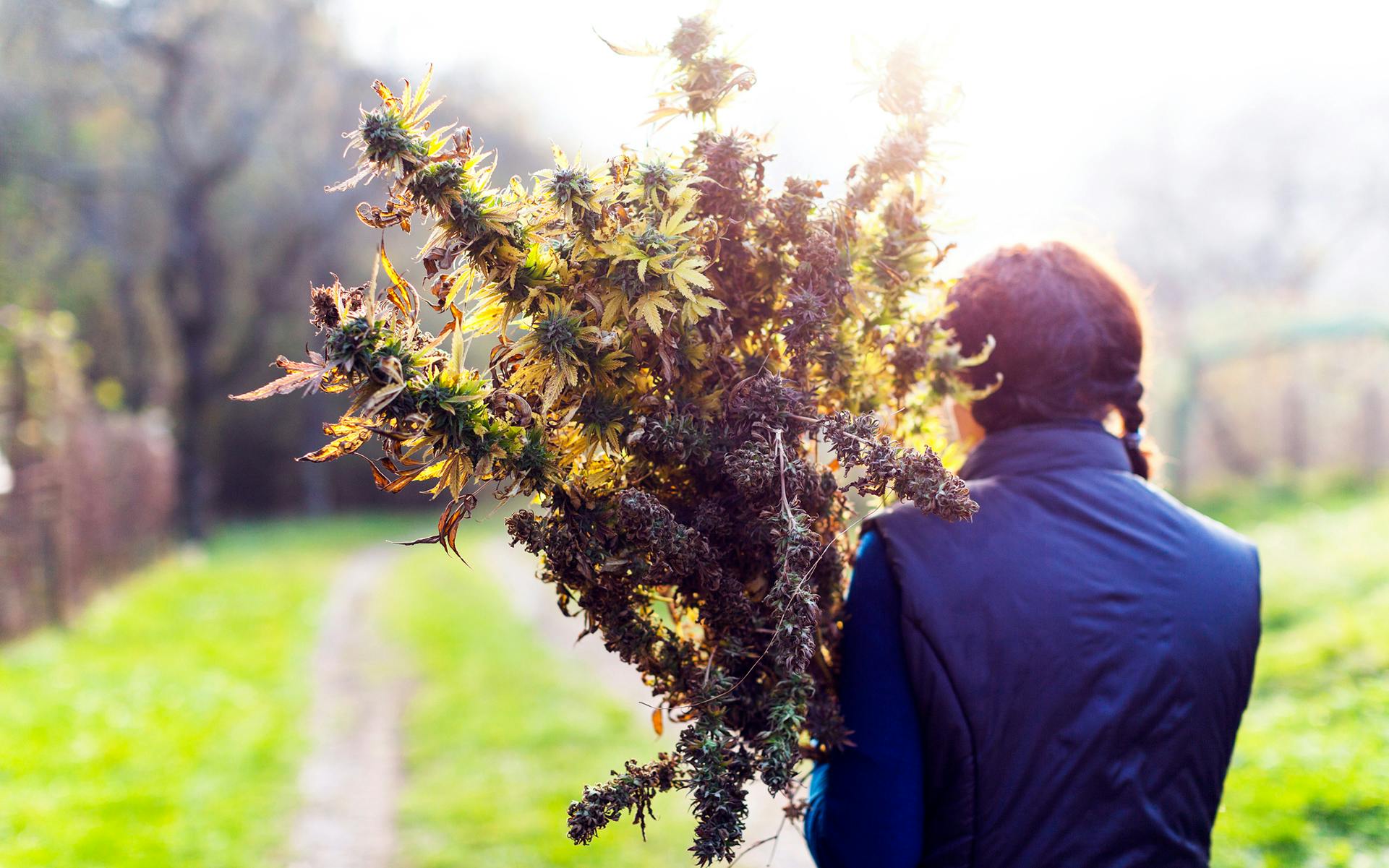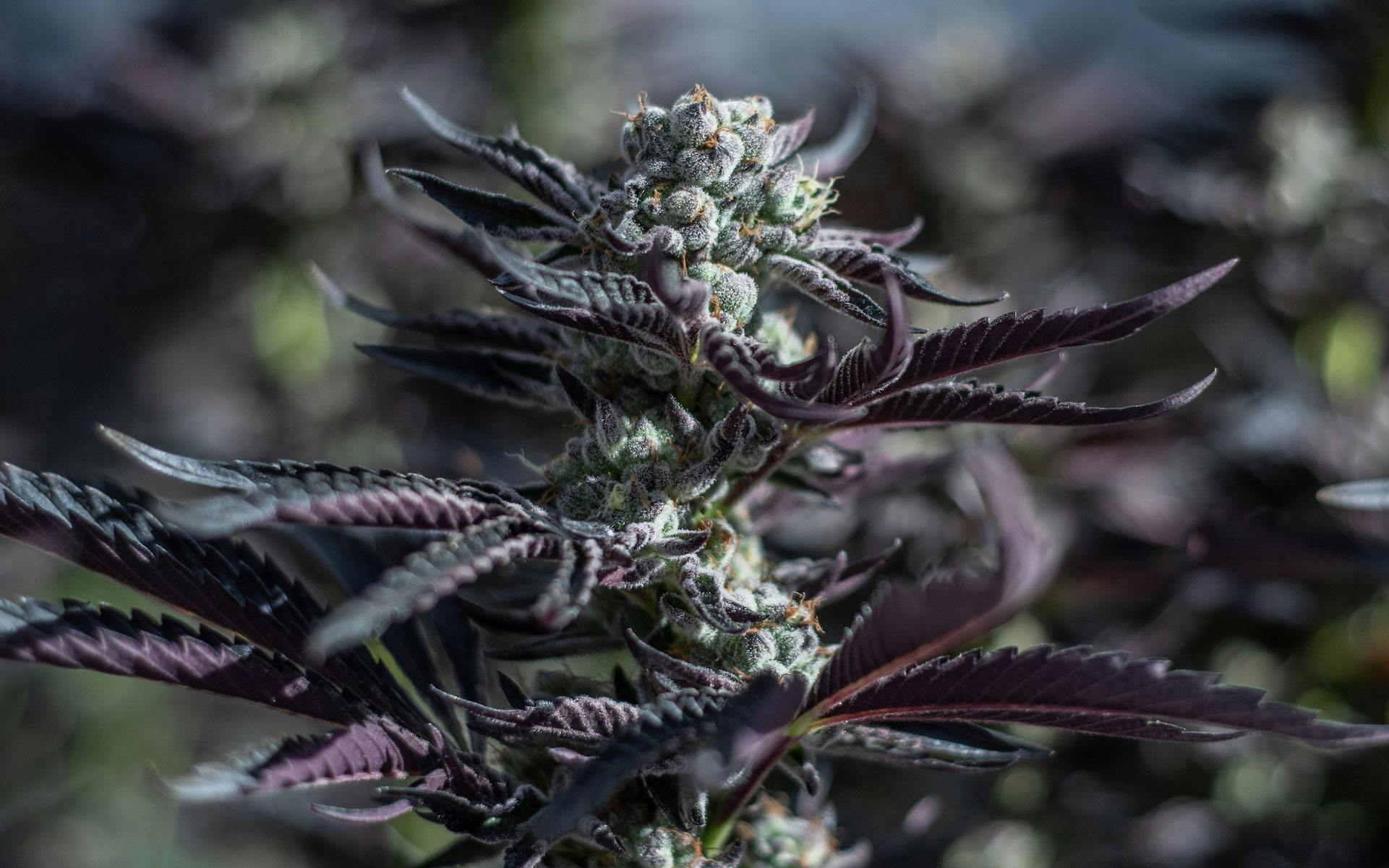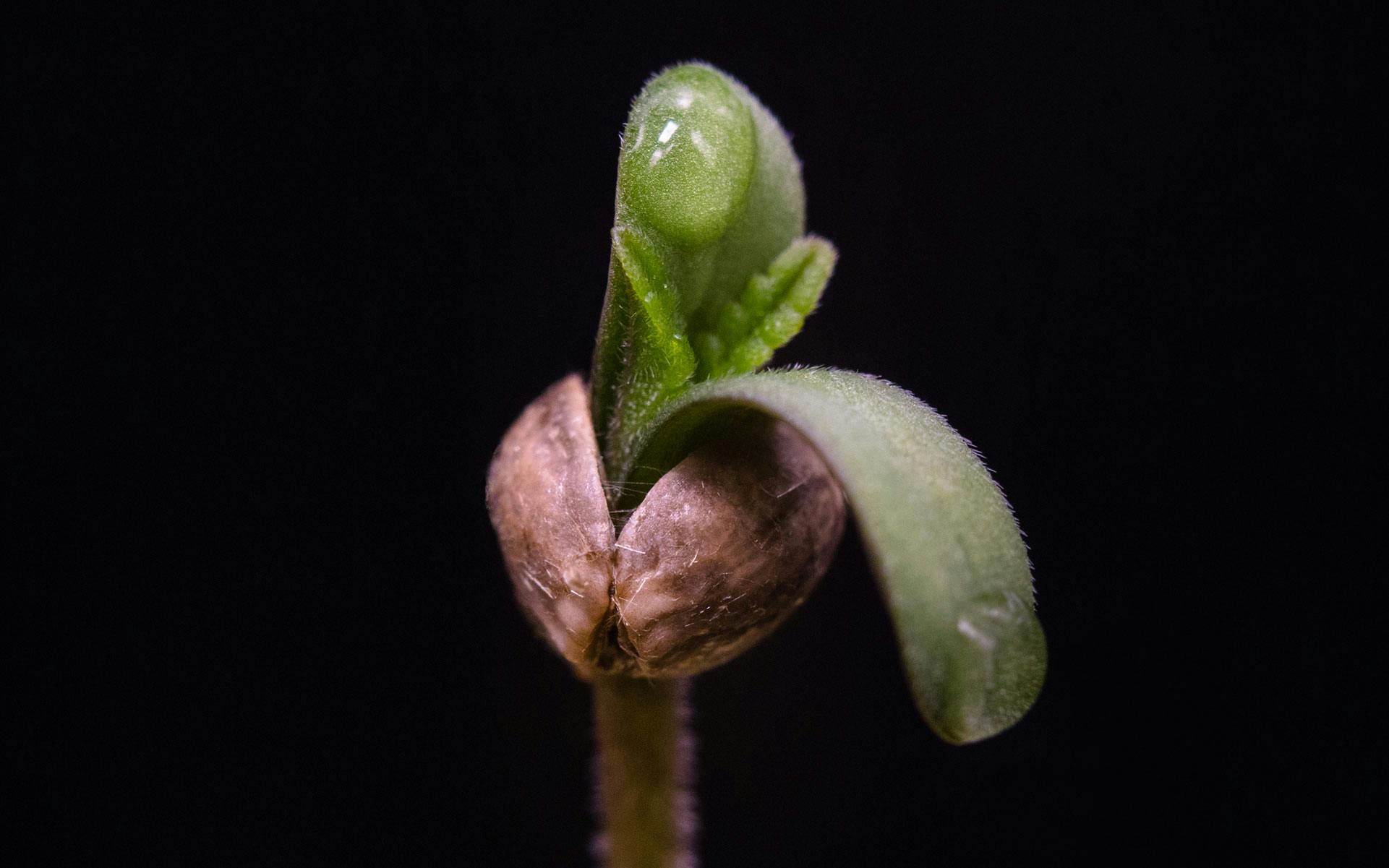Many people in the cannabis industry start out as trimmers. Wearing “sticky gloves” is a way to learn the ropes of cultivation and to meet others who are passionate about the plant.
But hand trimming—manually removing undesirable leaves and stems from the flower—is one of the most time-consuming parts of the production process. Hand-trimmers process an average of one to three pounds per day with each trimmer paid around $12-20 an hour.
But auto-trim machines, depending on the model, can process much more. For example, a small, tabletop dry trimmer can process three to five pounds an hour. At the larger end of the spectrum, machine trimmers can pump out 60 pounds of fully trimmed cannabis in an hour. With a price range of $95 to a few thousand, they pay for themselves quickly.
With legalization, cannabis consumption is steadily rising. Somebody’s got to satiate the masses. Are hand trimmers up to the task?
Get more tips and advice on trimming marijuana in Leafly’s Growing Guide.
A dying breed?
If craft growers and consumers have anything to say about it, hand trimmers won’t go extinct in the short-term.
There is still skepticism among growers and consumers about the quality of machine-trimmed weed. Many believe that machines strip out or degrade a plant’s natural properties.
Adrianne Mollins and her husband own AJ’s, a grow op about 10,000 square feet large in Pueblo, Colorado. They bought a trim machine from a reputable brand in hopes of greater efficiency. The machine worked well on dense buds but seemed to beat up less dense buds more than hand-trimming. Potency also dropped.
“Normally we’d have a bud-to-trim ratio of 70% bud to 30% trim. It was closer to 50/50 when we used the machine,” said Mollins. “We stopped using the machine because we consider ourselves boutique/craft growers where hand trimming is expected.”
Because of consumer skepticism, using machines can risk your reputation. Kate Phillips, industry consultant at Silk Canna and a cannabis consumer, admits to a hand-trim bias. “Consumers like myself do believe there is a difference, and will pay for the companies that continue to make this a part of how they handle their cannabis,” she said.
To increase efficiency and not lose face, some growers use trim machines partially and touch up the rest by hand. That way a grower can say they hand trim when in fact 90% of the bud is auto-trimmed.
The changing industry
Another reason the overall number of hand trimmers won’t drop in the short-term is there are too many new states and businesses coming online right now, which are more likely to rely on traditional practices as they gain footing. They also want to get to market fast and sometimes it’s easier to hire temporary trim staff as needed.
That said, the long-term forecast for hand-trimmers doesn’t look good, according to Kara Bradford, CEO of Viridian Staffing. When asked if the number of trimmers would eventually decrease, she said in an email: “In terms of the total percentage of cannabis processed by hand trimmers, overall, yes, undoubtedly. The march of the machines is accelerating across all industries.”
Shop highly rated dispensaries near you
Showing you dispensaries nearMike Sassano, Founder & CEO of Solaris Farms outside of Las Vegas, sees the need for hand trimmers dropping as the extract market takes off. “You don’t need pretty, well-trimmed buds for extract,” he said. And while high-end flower today will usually be hand trimmed, “The majority of cannabis sales are not high-end product,” said Sassano.
Phillips already sees some markets heading toward automation. “In more mature markets like Denver, Colorado, the facilities hire out contract trimmers for flower and allow mechanical processing for oil,” she said.
Shifting roles
For those who are worried for trimmers, take heart. Trimmers rarely just trim. Typically, trimmers also de-leaf, separate, and weigh product, clean and organize facilities, and perform other cultivation-related tasks. Trim machines, on the other hand, just trim. People who want to work in cultivation will still be able to find an entry-level job. It just might be called something else, like “Day Laborer,” “Harvest Worker,” Processing/Production Worker or Technician.”
According to Mike Brickey, CEO of Tetramed, freeing up trim labor with automation increases opportunities elsewhere. With automation comes more supply, and more cannabis means more storefronts, more delivery services, more sales teams, more designers, more chefs, more inspectors, and so on.
Says Brickey: “Trimmers or processors … will potentially move to different aspects of the industry. Not only that, but I’ve never had a [trimmer] that didn’t want to work their way up to a cultivation position. I’ve worn ‘sticky gloves’ myself. It’s not as easy as people think.”









